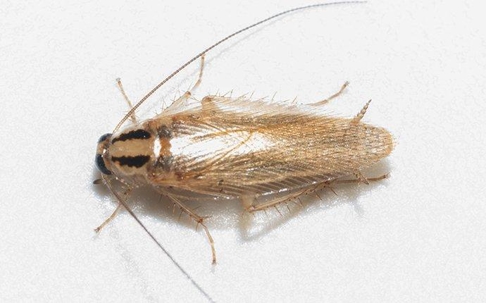The summer isn’t over yet, and we still have plenty of sunny days here in central Washington. But these sunny days are also giving opportunities to plenty of pests. The Kittitas County pest control experts at Prosite know these months can take a negative turn if German cockroaches decide to infest your home.
Hidden Insects: Rooting Out The Hidden German Cockroaches
German cockroaches are masters at hiding. Their cunning abilities, obstinate survival, and habits to occupy dark spaces make them a formidable pest. Some argue they are the worst species to deal with in America. They live exclusively indoors, moving from one location to the next by stowing away.
Possible places where you might find them are:
- In spaces behind walls or under floors
- In small cracks
- In basements or attics
- In kitchens
- Behind appliances
- In drains
Signs of cockroaches in your home aren’t always obvious. If you want to root them out, you can check all the small nooks and crevices. They won’t access the property from the outside; they will be nesting inside. Look behind appliances, clear out drains, and check damp and dark areas.
Phases Of The German Cockroach Lifecycle
German cockroaches are capable of reaching new indoor locations when adults lay eggs in containers, boxes, and transportation. These eggs will later hatch, introducing populations to new areas. The three stages of the German cockroach lifecycle are:
- Egg
- Nymph
- Adult
The adults can lay 30 to 40 eggs at once, managing to lay 400 in a lifetime. Sometimes the eggs will hatch while the adult is still carrying them. If the eggs are laid to grow on their own, they will have a protective encasement, making them resilient to attacks. This encasement, known as an ootheca, means eggs are hard to destroy. Once they hatch, nymphs emerge. Nymphs comprise 80% of infestations at a time, while adults comprise the other 20%. Cockroach nymphs take 100 days to mature, molting six to seven times before becoming fully-fledged adults capable of reproducing.
German Cockroach Prevention Tips For Kittitas County Residents
These types of cockroaches rarely venture outside. They will infiltrate homes in boxes or other means of transportation. Moisture, exposed food sources, and hiding places attract these pests. How to prevent cockroaches in Kittitas County:
- Fix leaky pipes.
- Treat drains that have standing water.
- Seal cracks around the house.
- Ventilate garages, basements, or attics to prevent moisture buildup.
- Keep food in airtight containers.
- Vacuum often.
- Clear out clutter.
- Clean behind appliances like refrigerators.
- Throw away boxes or other delivery containers to avoid cockroach eggs in your home.
German cockroaches live in hidden areas of a property. They also like to nest near food or water sources, so prevent them from setting up nests by depriving them of these resources. While clean houses might still draw these pests in, it still gives you a huge advantage to keep areas sanitary. Not only will it deprive them of food sources, it could also fight potential infected surfaces. Cockroaches traverse through all types of unsanitary locations, carrying and trailing bacteria as they scuttle along. If you have an infestation, sanitize food prep surfaces and keep your food locked in airtight containers.
Professional German Cockroach Extermination In Kittitas County
A German cockroach infestation is notoriously one of the worst pest infestations imaginable. Their ability to quickly multiply and hide makes them a tricky adversary. Luckily, professionals have evolved German pest control techniques and technology to battle them.
At Prosite, we’ve become every pest’s worst nightmare. We approach every infestation with meticulous, scientific, and effective methods. If you find a cockroach in your house, give us a call for urgent pest control services in the Kittitas County area.

